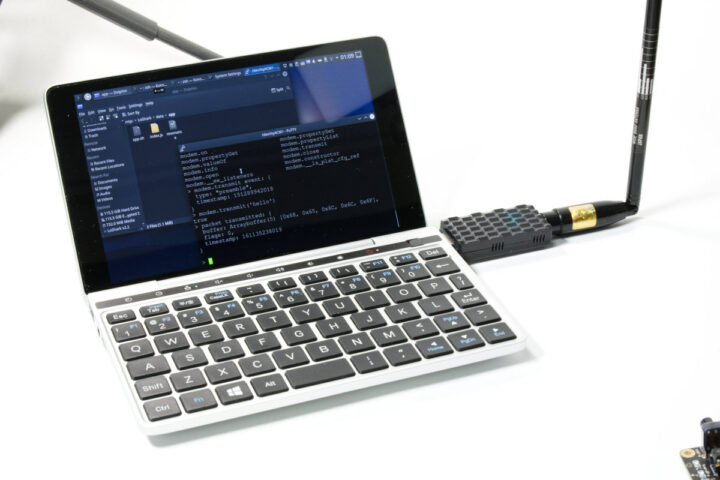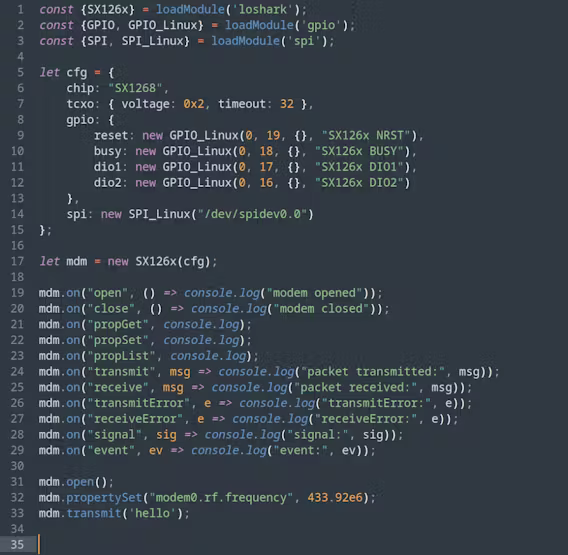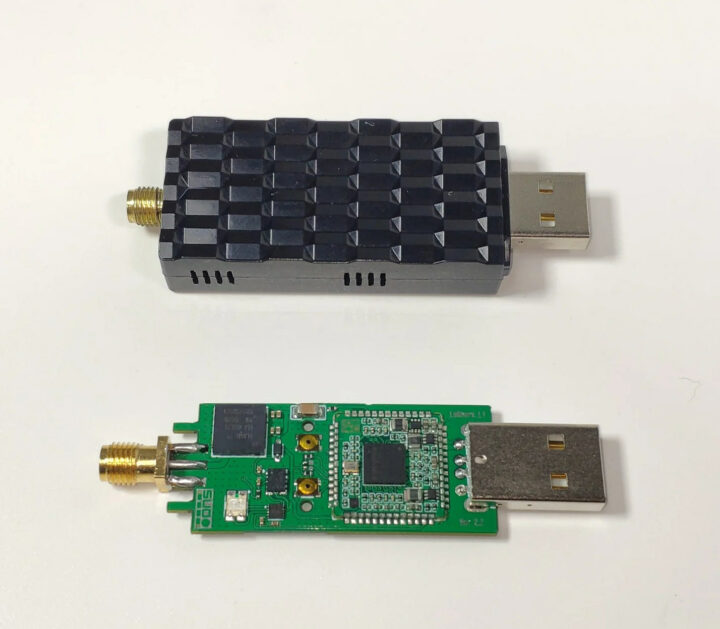Sudomaker LoShark L1 is a USB dongle with Semtech SX1262/SX1268 LoRa transceiver and a Linux-capable Ingenic X1501 MIPS processor with 8MB on-chip memory that serves as a LoRa debug tool that can use a JavaScript interface to access to all SX126x chip registers.
The LoShark L1 USB key offers both LoRa connectivity and debugging capabilities such as packet capture (hence the reference to WireShark) and can operate either independently (standalone) or in conjunction with a PC as shown below with a mini laptop.

LoShark L1 specifications:
- SoC – Ingenic X1501 MIPS processor @ 1 GHz with 8MB DRAM, 2200+ CoreMark,
- Memory – Optional 8MB PSRAM (Lyontek LY68L6400SLIT)
- Storage – 4GB MLC or 256 MB SLC NAND flash
- Wireless connectivity
- HJSIP HJ-68LR LoRa module based on Semtech SX1262/SX1268 with TCXO
- Support for 433 MHz, 868 MHz, and 915 MHz bands
- SMA-F antenna connector
- USB – 1x USB Type-A male port for power and data
- Misc – EPSON RX8900CE RTC or compatible, supercapacitor
- Power Supply – 5V via USB port
- Dimensions – TBD
It’s not the first MIPS device by Sudomaker (aka Reimu NotMoe), as they designed the tiny 16x16mm X1501 Pico SoM last year together with an evaluation board (EVB) with the same Ingenic X1501 MIPS processor which is expected to launch on Crowd Supply in the future. It also happens to power the LoShark L1 USB adapter as we can clearly on the photo above.
Sudomaker released the PDFs of schematics and component placement on the PCB, a buildroot script to build a complete image with a rootfs, mainline Linux kernel, and U-Boot bootloader, as well as the USB firmware update tool on GitHub. There’s less information about JavaScript support, but we’re told the Resonance runtime support a JavaScript ES2015 interface.

The LoShark L1 can be purchased now for $49.99 with 256MB flash, or $59.99 with 256MB flash, PSRAM, an RTC, and a supercapacitor. Stocks are limited for the first batch as only 30 pieces have been assembled.
Via Hackster.io

Jean-Luc started CNX Software in 2010 as a part-time endeavor, before quitting his job as a software engineering manager, and starting to write daily news, and reviews full time later in 2011.
Support CNX Software! Donate via cryptocurrencies, become a Patron on Patreon, or purchase goods on Amazon or Aliexpress





